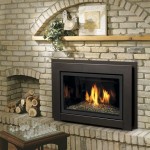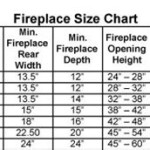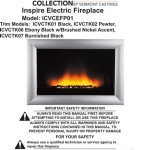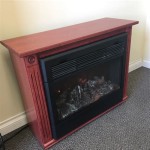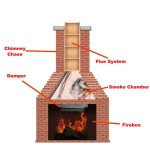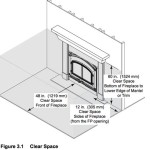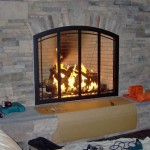## The Essential Guide to Small Wood-Burning Stove Fireplaces
Small wood-burning stove fireplaces can provide a cozy and efficient way to heat your home while adding a touch of rustic charm to your décor. Choosing the right stove and installing it safely are crucial for enjoying the benefits of a wood-burning fireplace without any risks. Here's a detailed guide to the essential aspects of small wood-burning stove fireplaces.
### Choosing the Right StoveWhen selecting a wood-burning stove, consider the following factors:
* **Size:** Determine the appropriate size for your room. A larger stove will heat a larger space, but consider the stove's dimensions and the available clearance. * **Efficiency:** Look for stoves with high efficiency ratings, which indicate how well they convert fuel into heat. * **Fuel Type:** Choose a stove compatible with the type of wood you plan to burn, such as seasoned hardwoods or softwoods. * **Style:** Consider the stove's style and appearance to complement your home décor. ### Safe InstallationProper installation is essential to ensure the safe and efficient operation of your wood-burning stove. Consider the following steps:
* **Chimney and Flue:** Ensure that the stove is connected to a functioning chimney with a proper flue to vent smoke and gases. * **Clearance:** Maintain adequate clearance between the stove and combustible materials, such as walls, furniture, and curtains. * **Hearth Extension:** Install a non-combustible hearth extension in front of the stove to protect the floor from sparks and embers. * **Electrical Wiring and Gas Lines:** Inspect the surrounding area for electrical wiring and gas lines that may interfere with the installation. * **Professional Installation:** Consider hiring a qualified installer to handle the technical aspects of the installation. ### Wood Selection and BurningUsing the right type of wood is crucial for efficient burning and reduced smoke emissions. Choose seasoned hardwoods, such as oak, ash, or maple, for longer burn times and higher heat output. Avoid burning softwoods, as they burn quickly and produce more smoke.
* **Seasoning:** Season wood for at least six months in a dry, sheltered area to reduce moisture content. * **Kindling and Logs:** Use small pieces of kindling to start the fire and gradually add larger logs. * **Air Control:** Adjust the air inlet dampers to control the intensity of the fire. ### Safety PrecautionsOperating a wood-burning stove safely requires attention to a few essential precautions:
* **Fuel:** Only use dry, seasoned firewood in your stove. * **Supervise:** Never leave a fire unattended. * **Cleanliness:** Regularly clean the stove and chimney to prevent creosote buildup. * **Ember Removal:** Use an ash bucket to safely remove embers from the stove. * **Carbon Monoxide Detector:** Install a carbon monoxide detector near the stove to alert you to any potential dangers. By following these essential aspects, you can enjoy the warmth and ambiance of a small wood-burning stove fireplace while ensuring safety and efficient operation.
Stovax Vogue Small Stove Fireplace Supers

The Hobbit Stove Eco Design Approved Salamander Stoves

Monochrome Maison Small Wood Burning Stoves Salamander

Vogue Small Wood Burning Stoves Stovax Contemporary

Best Wood Fireplaces For Small Spaces

A Tiny Wood Stove Is The Cozy Glow Heater Your Cabin Needs Sunset

Small Wood Burning Stoves Bonfire Berkshire

Wood Burning Stoves For Small Houses

5 Small Wood Burning Or Multi Fuel Stoves From Dovre

Comparing Wood And Propane Heat Tiny Stove
Related Posts

